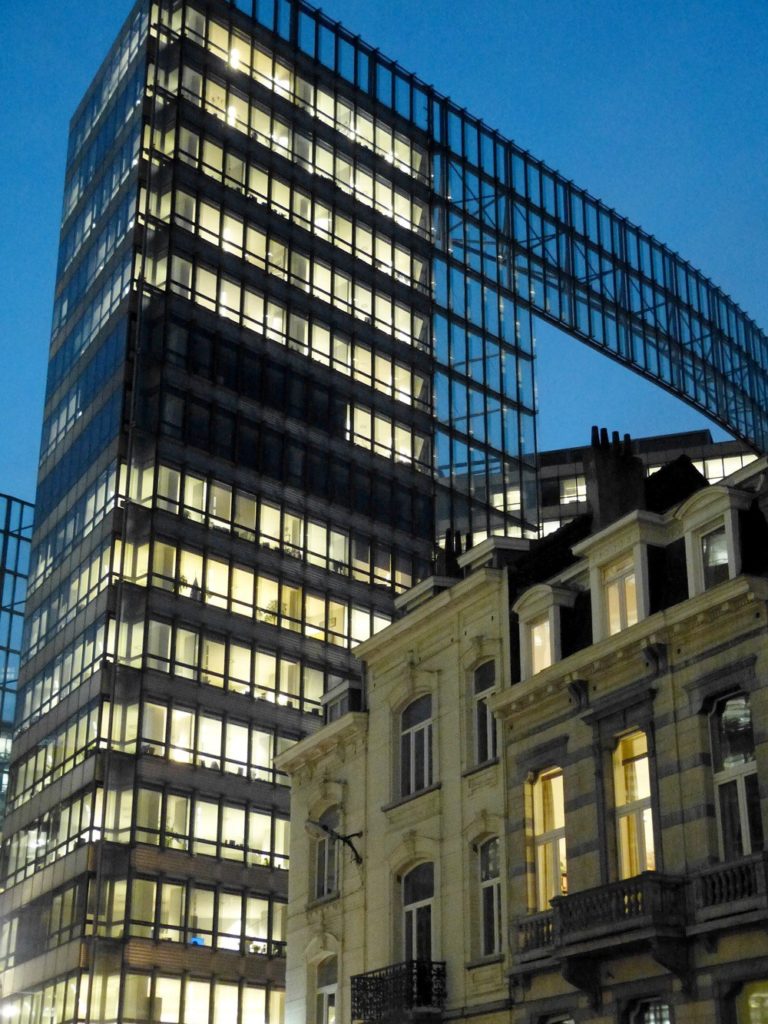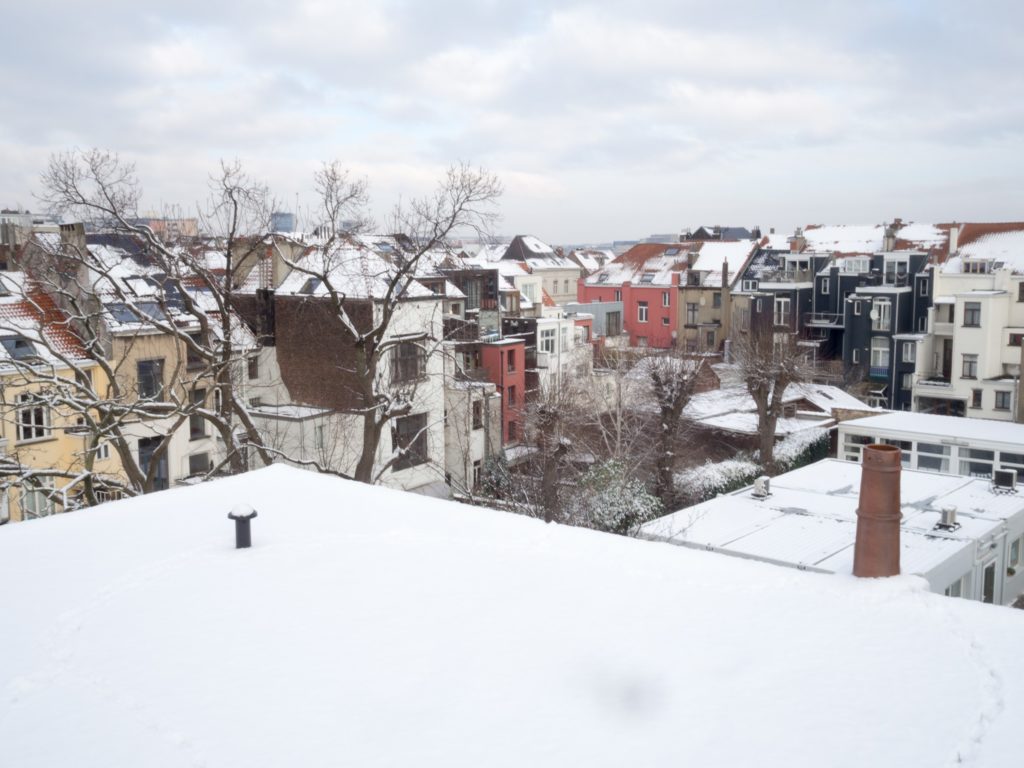April, always: A portrait of Brussels in parts
Form
This week I entered the Berlaymont building for the first time. Walking into it as a visitor feels like going on holiday except after passing through security there is no duty free. The corridors are lined with pictures of people and solar panels. The windows don’t fully open but the views are spectacular.
Looking out towards rue de la Loi there is the Europa building with a facade made of 3,750 wooden window frames set around an interior in the shape of an egg. The combination looks fragile and stable, closely tied and open, complicated and simple, strange, and it’s as it belonged here. It looks agile and utopian next to the older Justus Lipsius building where large tiled columns arch together at the roof towering over rectangular window panes.
Rain turns to snow dancing in mid-air before blanketing the streets, acting as a canvas for dog poo on the side walk, mingling and dissolving in puddles, then disappearing from view. The sky is blue and lit windows emanate life like human beehives.

In other places windows do fully open and it feels daring to exercise that freedom. Stepping out on the balcony in one of the tallest buildings in Brussels, the 26 story apartment tower next to Bar du Matin, is like walking at the edge of a cliff, or looking down from a suspended roller coaster. Everything below looks like mini Europe. It is maybe the only place that offers a full view onto the star-like architecture of the prison of Saint Gilles. The voices of guards can be heard up here, calling out the numbers of inmates who walk in the round fenced off grey yards. The building blocks are separated by green grass, a no man’s land between walls. The inmates of the prison of Saint-Gilles and any other Belgian prison have the right to flee. Only they ought to leave their prison clothes behind. The pursuit of freedom isn’t punishable. Stealing is. The law demands that they navigate their way out of their cells without breaking or stealing anything.
On Google maps Brussels looks like a web of streets around cells of houses. Zooming in on street level we face poly-stylistic facades. It seems like each house was built to unique measurements, with windows at and of different heights.
While houses seem to go straight up from the sidewalks their backs are often composed of Tetris-like shapes. The view out of a rear window in an artist studio in Anderlecht or a family home in Ixelles shows balconies and extra rooms that spring forward into the green space between the buildings. Sometimes whole houses can be found in these enclosed areas, hidden from street view.




